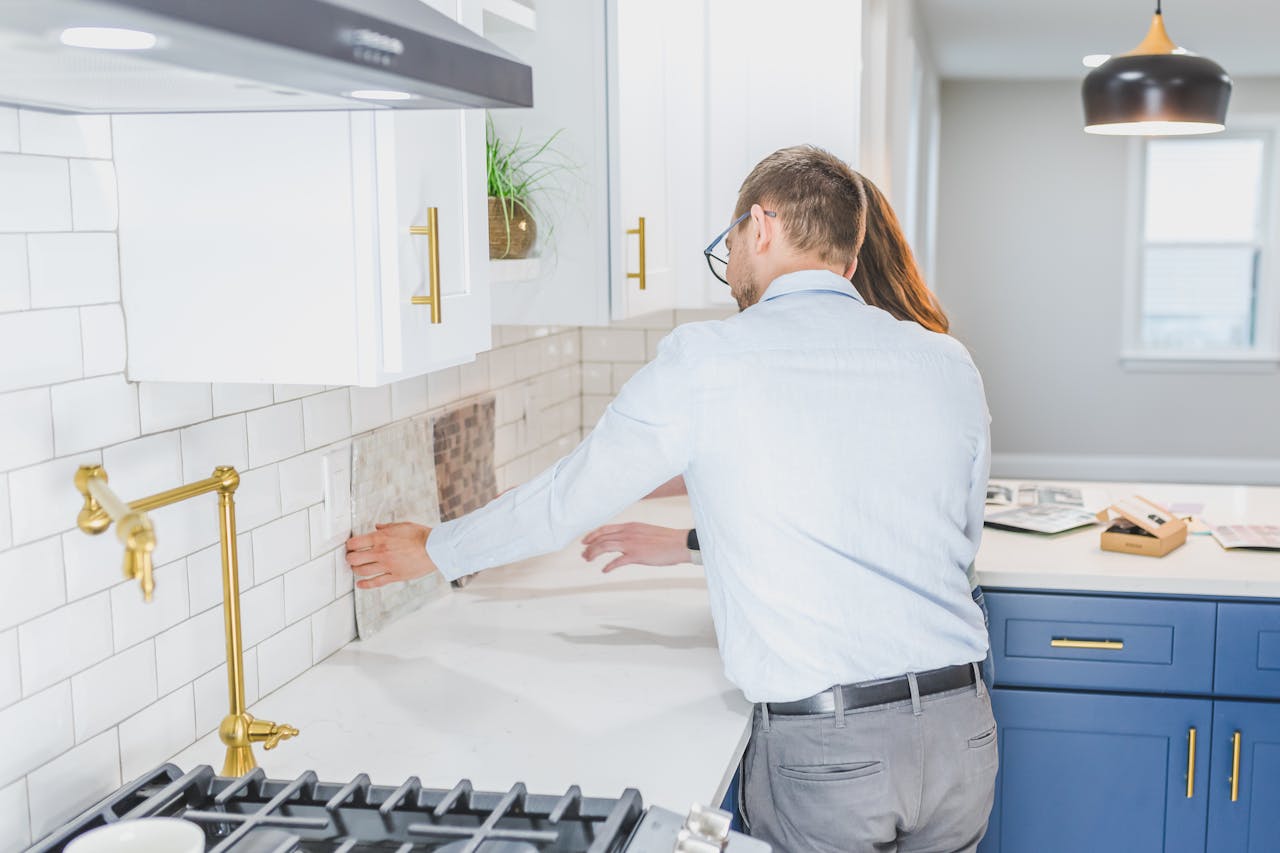The kitchen, often referred to as the heart of the home, is a vibrant hub of activity. Yet, in many older homes across the UK, it is also a hotspot for dampness and mold. These conditions are not just unsightly; they can also pose significant health risks. Learning how to effectively deal with dampness and mold is crucial for homeowners. In this article, we’ll delve into the main causes – such as condensation, lack of ventilation, and inadequate heating – and explore practical solutions.
The Issue: Understanding Damp and Mold in the Kitchen
Before we can address the problem, it’s important to understand what we’re dealing with. The presence of dampness and mold in your kitchen is a clear sign of excess moisture. This situation can occur for a variety of reasons, including issues with condensation, inadequate heating, or even poor property construction.
Also to discover : What are the health benefits of using natural materials in kitchen construction?
Dampness is commonly caused by excess water in the air that finds its way onto colder surfaces, such as walls and windows—this is what we generally refer to as condensation. On the other hand, mold is a fungus that thrives in damp, humid conditions. It forms clusters of black, green, or brown patches that are not only unsightly but can also emit a musty odor.
The Impact: Damp, Mold and Health
A damp and mold-infested kitchen doesn’t just affect the aesthetics of your home—it can also have a serious impact on your health. Prolonged exposure to mold can cause various health problems, ranging from skin irritations, nasal congestion, sore throat, coughing, or even chronic respiratory issues in more severe cases.
Also read : What are the essential factors to consider when choosing kitchen window treatments?
The World Health Organisation has identified damp and mold as a major threat to public health, especially in housing with poor ventilation, inadequate heating, and high humidity. The key to preventing these problems is to address the sources of moisture in your kitchen.
The Causes: How Kitchens Become Damp and Moldy
The kitchen is one of the most moisture-filled rooms in the house. Activities such as cooking, washing up, and even boiling the kettle can all increase the amount of moisture in the air.
However, moisture alone does not lead to a damp and moldy kitchen. There needs to be a problem with the way the moisture is handled. This could be due to inadequate ventilation, where moist air is not effectively removed. It could also be due to issues with heating and insulation, which can create cold surfaces for condensation to form.
Sometimes the structure of the property itself can contribute to the problem. Older homes in the UK often have solid walls without a cavity, making them more susceptible to dampness and mold.
The Solutions: Tackling Damp and Mold
Fortunately, dampness and mold are not unstoppable forces. With the right approach and the right tools, you can reclaim your kitchen from these unwelcome intruders.
One of the most effective ways to combat dampness and mold is to improve ventilation in your kitchen. This could be as simple as opening a window while cooking or washing up, or you might need a more robust solution like installing an extractor fan.
Heating is another important factor. Keeping your kitchen warm will help to prevent condensation from forming on cold surfaces. However, it’s not just about cranking up the heat—you also need to think about insulation. Insulating your walls and windows can help to maintain a steady temperature and prevent condensation.
Finally, consider your cooking and washing habits. Simple changes like putting lids on pans while cooking, drying wet dishes before storing them, and wiping down surfaces can all help to reduce the amount of moisture in your kitchen.
The Prevention: Keeping Damp and Mold at Bay
Once you’ve tackled the immediate problem, it’s important to stay vigilant to prevent dampness and mold from returning. Regularly check for signs of condensation, such as water droplets on windows or walls. Also, keep an eye out for the first signs of mold: small, black specks on walls, ceilings, or around window frames.
Maintain good ventilation in your kitchen, keep heating and insulation up to standard, and continue with moisture-reducing habits. Remember, preventing damp and mold is always easier than dealing with an established problem.
Remember, dealing with dampness and mold in the kitchen isn’t just about making your home look better—it’s about creating a clean, safe, and healthy environment for you and your loved ones.
The Practical Steps: How to Remove Damp and Mould
Armed with a better understanding of the causes and impacts of damp and mould, it’s time to begin the process of reclaiming your kitchen space. The first step is to remove the existing dampness and mould. This requires a practical, hands-on approach, and may involve the use of specialised products or professional services.
Long-term dampness often results in what is known as rising damp, a condition that is typically characterised by a tide mark of damp on lower sections of walls. If you notice signs of rising damp, you may need to seek professional help as this could indicate more serious structural issues.
Next, identify areas of mould growth. Mould is most commonly found on walls, ceilings, window frames, and in corners where moisture tends to gather. It’s important to remember that mould spores can be harmful if inhaled, so always wear protective clothing and a mask when dealing with mould.
There are plenty of mould and damp removing products available on the market, from sprays to paints. These can be very effective in removing existing mould and preventing new growth. However, if your kitchen is heavily affected, it might be worth considering a professional mould removal service to ensure the job is done thoroughly and safely.
As a note for those living in social housing, landlords are legally obliged to address issues with damp and mould. So, if you’re struggling to deal with the issue yourself, it might be worth reaching out to your housing provider for support.
The Role of Technology: Using Extractor Fans and Dehumidifiers
When looking at strategies to prevent mould and damp from returning, technology can be your best friend. Extractor fans and dehumidifiers are two pieces of equipment that can significantly reduce the level of water vapour in your kitchen, helping to keep damp and mould at bay.
Extractor fans, in particular, can be a game-changer. By removing excess moisture from the air, they prevent the formation of condensation damp on your walls and ceilings. There are various styles and sizes available, so you’re sure to find one that suits your kitchen. Remember to switch it on whenever you’re cooking or washing dishes to maximise its effectiveness.
In addition to extractor fans, dehumidifiers can also be a useful tool in the fight against damp and mould. These devices work by removing excess moisture from the air, reducing the likelihood of condensation forming on cold surfaces. They can also help to accelerate the drying process after any water spills or leaks.
Conclusion: A Damp-free and Mould-free Kitchen is Achievable
In conclusion, dealing with dampness and mold in older UK kitchen spaces can seem like a daunting task, but with the right knowledge and tools, it’s certainly achievable. Key to this process is understanding the causes of dampness and mould, such as condensation, inadequate ventilation, and poor heating, and taking practical steps to address these issues.
It’s also worth remembering that prevention is always better than cure. Regularly checking for signs of dampness and mould, maintaining good ventilation, keeping your kitchen warm, and practising moisture-reducing habits can all help to keep these problems at bay.
While extractor fans and dehumidifiers can make a big difference, sometimes the solution could be as simple as opening windows to allow natural ventilation, or drying wet dishes before storing them away. In severe cases, you might need to call in professionals, particularly for issues like penetrating damp which could indicate more serious structural problems.
Ultimately, dealing with damp and mould is about more than just preserving the aesthetics of your kitchen—it’s about ensuring a healthy living environment for you and your loved ones. So, take action today and reclaim your kitchen from the clutches of dampness and mould.






